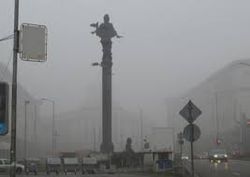ISSS608 2018-19 T1 Assign Lee Kern Choong
|
|
|
|
|
Contents
Overview
Air pollution is an important risk factor for health in Europe and worldwide. A recent review of the global burden of disease showed that it is one of the top ten risk factors for health globally. Worldwide an estimated 7 million people died prematurely because of pollution; in the European Union (EU) 400,000 people suffer a premature death. The Organisation for Economic Cooperation and Development (OECD) predicts that in 2050 outdoor air pollution will be the top cause of environmentally related deaths worldwide. In addition, air pollution has also been classified as the leading environmental cause of cancer.
Background
Air quality in Bulgaria is a big concern: measurements show that citizens all over the country breathe in air that is considered harmful to health. For example, concentrations of PM2.5 and PM10 are much higher than what the EU and the World Health Organization (WHO) have set to protect health.
Bulgaria had the highest PM2.5 concentrations of all EU-28 member states in urban areas over a three-year average. For PM10, Bulgaria is also leading on the top polluted countries with 77 μg/m3on the daily mean concentration (EU limit value is 50 μg/m3).
According to the WHO, 60 percent of the urban population in Bulgaria is exposed to dangerous (unhealthy) levels of particulate matter (PM10).
Problem Tasks
In this assignment, 3 tasks will be performed using visual analytics approach to reveal spatio-temporal patterns of air quality in Sofia City and to identify issues of concern. They are:
Spatio-temporal Analysis of Official Air Quality
First, we will characterize the past and most recent situation with respect to air quality measures in Sofia City. Along the way, we will highlight any trends of possible interest for investigation, including anomalies and how they affect our analysis.
Spatio-temporal Analysis of Citizen Science Air Quality Measurements
Next, using appropriate data visualisation techniques, we will characterize the sensors’ coverage, performance and operation. We will also explore the air pollution measurements themselves to determine if there are sections of the city which have higher readings, and whether they are dependent on the time of day.
Explore other factors affecting air quality in Sofia City
In this third task, we will be looking to uncover the relationships between factors e.g. local energy sources, meteorology, topography, transboundary pollution and the air quality measure detected in Task 1 and Task 2.
Other Data Sources
Latitude and Longitude of the 6 stations were obtained from the Data Science Society.
